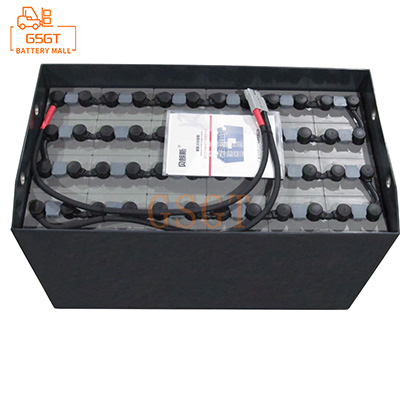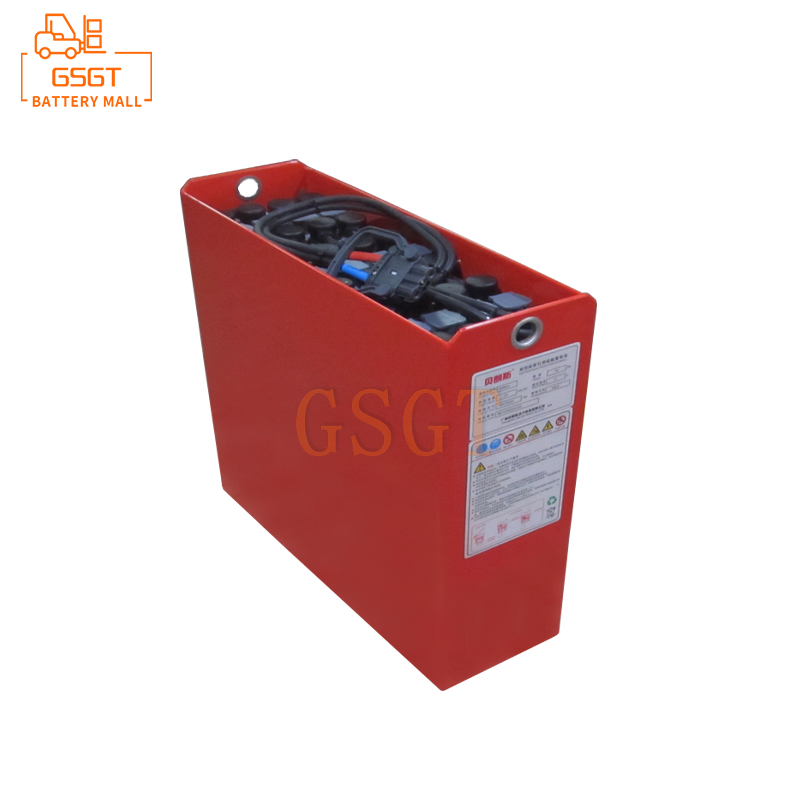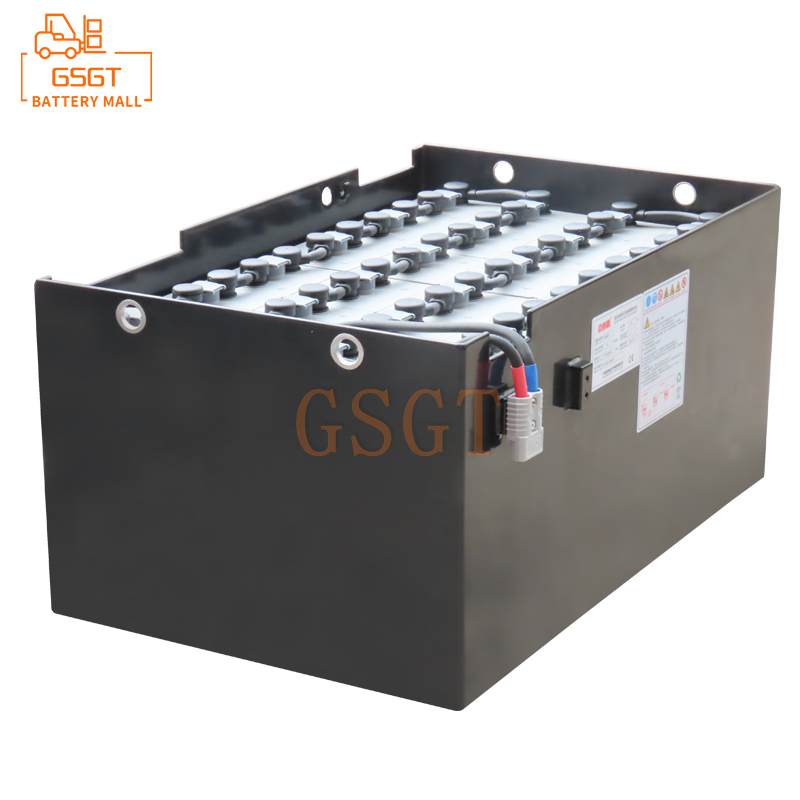Time:2025-07-08 09:51:42
Browse:617
In many fields such as logistics warehousing and factory handling, forklifts, as key material handling equipment, play a significant role. For forklifts that use lead-acid batteries as their power source, how to achieve long-term operation without consuming electricity is the key to improving the forklift's working efficiency and reducing operating costs. This not only concerns the daily use of forklifts, but also has a profound impact on the overall production and operation of enterprises. Next, we will delve deeply into this important topic.
The working principle of lead-acid batteries
Before exploring how to enable forklifts to work with lead-acid batteries for a long time without consuming power, it is necessary for us to first understand their working principle. Lead-acid batteries are mainly composed of positive and negative plates, electrolyte, separators and other components. During discharge, lead dioxide (PbO₂) on the positive plate and lead (Pb) on the negative plate undergo a chemical reaction under the action of dilute sulfuric acid (H₂SO₄) in the electrolyte to form lead sulfate (PbSO₄), while releasing electrical energy. During this process, the concentration of sulfuric acid gradually decreases, and the voltage across the battery drops accordingly. During charging, the opposite is true. Lead sulfate is decomposed and reduced to sulfuric acid, lead and lead oxide, the concentration of acid in the electrolyte increases, and the battery voltage rises again.
So the question arises: What is the direct connection between this chemical reaction and the battery working for a long time without consuming power? In fact, understanding this principle is the foundation for all our subsequent discussions on methods. Only by clearly understanding the changes of the battery during the charging and discharging process can targeted measures be taken to optimize battery performance and achieve the goal of not consuming power during long-term operation.
The influence of daily usage habits on battery power consumption
Daily usage habits largely determine the power consumption of lead-acid batteries in forklifts. Frequent sudden braking and acceleration are among the main culprits of power consumption. Each time the forklift brakes suddenly, its kinetic energy is instantly converted into heat energy and dissipated. However, restarting it requires a large amount of electrical energy. This process not only increases the working load on the battery but also indirectly damages it, leading to rapid consumption of power.
Therefore, during the operation of forklifts, operators should try to maintain smooth driving and avoid sudden braking and acceleration. This can significantly reduce the power consumption of the battery. In addition, timely charging is also of vital importance. After the forklift battery discharges, the plates start the sulfation process. From 12 hours later, the sulfation phenomenon becomes more and more obvious, and a layer of white coarse-grained lead sulfate will form on the plates, seriously blocking the pores of the plates and reducing the battery capacity. Therefore, after using the forklift, it should be charged as soon as possible to keep the battery capacity fully charged. This helps to extend the battery's service life and reduce power consumption.
Some people might ask, then if I often forget to charge my device in time, is there any remedy? If you occasionally forget to charge in time and the vulcanization is not severe, timely charging can remove some of the vulcanization crystals. However, if the battery is not charged in time for a long time, large sulfide crystals will form, and ordinary chargers will be powerless. The battery capacity will gradually decrease and its lifespan will also be shortened. Therefore, it is very necessary to develop the good habit of charging in time.
Can scientific charging management help batteries achieve "long-lasting endurance"
Scientific and reasonable charging management is an important link to achieve long-term operation of forklift lead-acid batteries without power consumption. First of all, make sure the battery has a certain amount of power before charging to avoid charging with low power. Because in a low battery state, the chemical reaction activity inside the battery decreases, the charging efficiency drops. This not only takes more time but may also cause damage to the battery, affecting its service life and thereby increasing power consumption.
In addition, excessive discharge should be avoided. When the electricity meter shows only one bar of power, the power should be turned off as soon as possible and charged. Excessive discharge will increase the internal resistance of the battery, make the concentration of the electrolyte very thin, and make the holes and surfaces of the plates almost neutral. At this time, the internal resistance of the battery has a tendency to heat up, the volume expands, and when the discharge current is large, it may even cause heating and deformation. Moreover, excessive discharge can cause lead sulfate to crystallize into larger particles, resulting in irreversible sulfation, which further increases the internal resistance, deteriorates the charging recovery ability, and may even be irreparable.
There is another key question: Are there any special requirements for battery charging in different seasons? In summer, when the ambient temperature is high, it is difficult for the battery to dissipate heat. Therefore, the temperature of the battery should be reduced as much as possible to ensure good heat dissipation. It is necessary to prevent charging immediately after direct exposure to the sun and keep it away from heat sources. High temperatures can accelerate the chemical reactions inside the battery, leading to a faster self-discharge and affecting battery performance. In winter, the chemical reactivity of the battery decreases, and the charging time may need to be appropriately extended to ensure that the battery is fully charged.
The details of battery maintenance and care should not be overlooked
In addition to the above-mentioned precautions regarding usage and charging, regular maintenance and upkeep of forklift lead-acid batteries is also an important guarantee for achieving long-term operation without power consumption. To keep the exterior of the battery clean, it is necessary to frequently remove the oxide and acid scale at the terminal posts. If there is residual electrolyte on the battery cover, it will cause conduction between the positive and negative terminals of the individual cell, thereby leading to self-discharge. In addition, when replenishing water for the battery, deionized water or distilled water must be added. If too many impurities are added, it will accelerate the self-discharge rate.
For batteries that have not been used for a long time, it is advisable to replace them with thinner electrolyte and conduct supplementary charging once a month. This can effectively prevent the battery from running out of power due to self-discharge and thus affecting its lifespan.
To achieve long-term operation without power consumption for lead-acid batteries used in forklifts, it is necessary to start with understanding the working principle, pay attention to daily usage habits, scientific charging management, and meticulous maintenance and care, among other aspects. Only by comprehensively taking these measures can the lead-acid batteries of forklifts maintain good performance, providing long-lasting and stable power support for the efficient operation of forklifts, helping enterprises reduce operating costs and improve overall production efficiency.

$2860

$705

$575

$2180

MESSAGE
Professional And Efficient
Security
Affordable Price
Professional Services